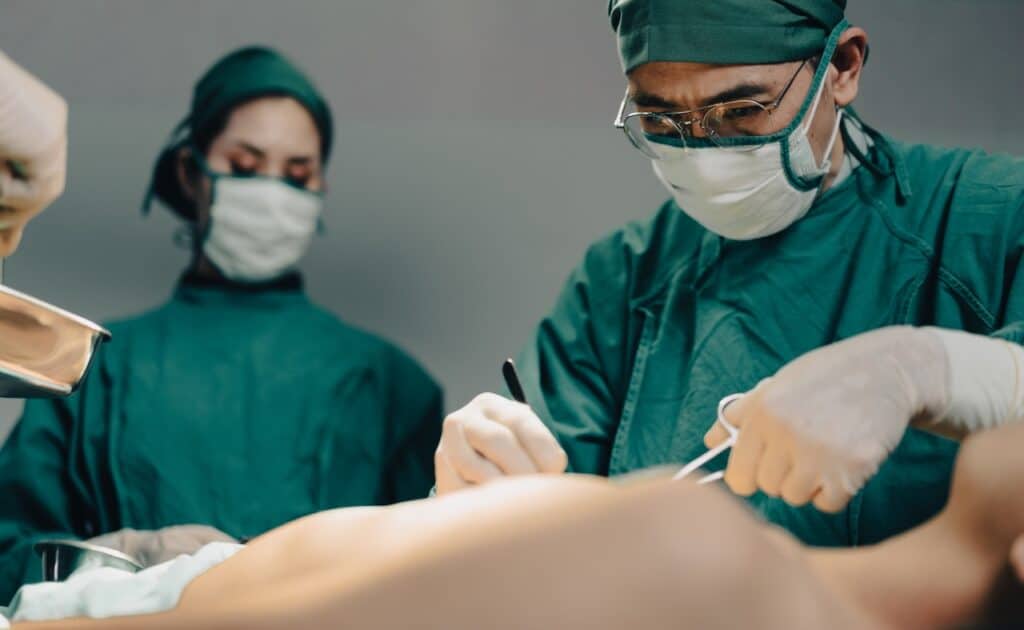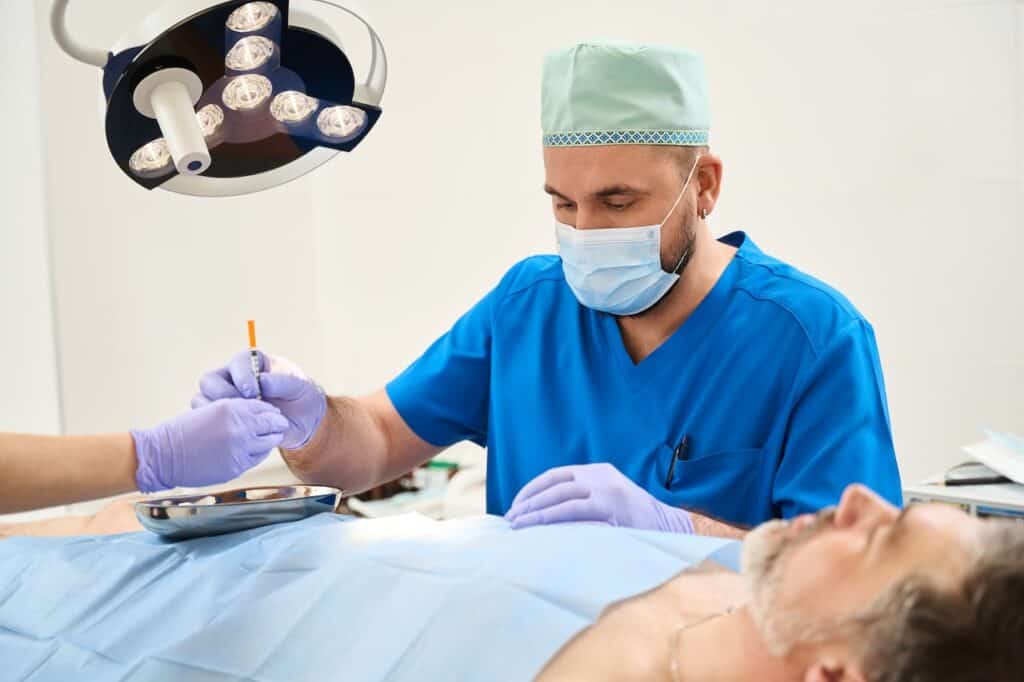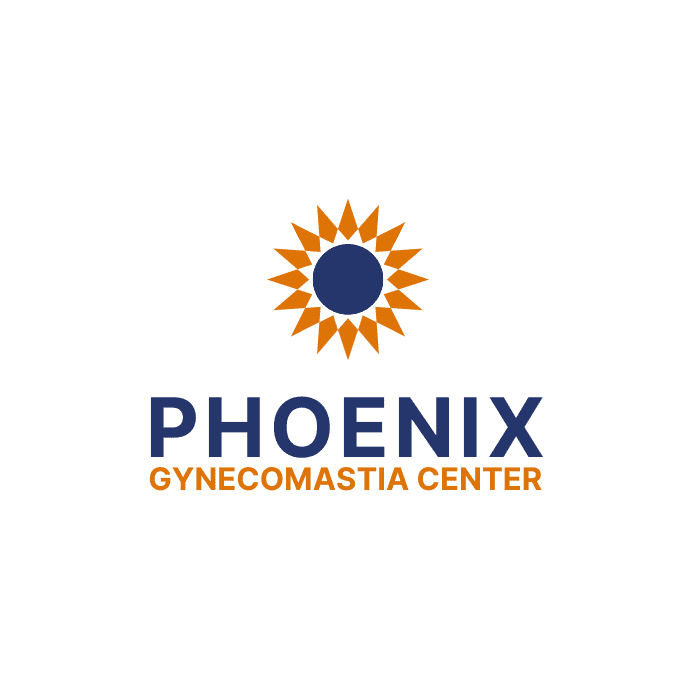If you or a loved one has noticed uneven swelling or enlargement of the chest, you are far from alone. Many men experience physical and emotional distress from chest asymmetry, often without understanding the underlying causes.
At the Phoenix Gynecomastia Center, we see many patients who feel self-conscious about this common but often misunderstood condition. We are here to help you understand what is happening, why it’s occurring, and how effective, natural-looking solutions are available.
Let’s take a closer look at everything you should know about asymmetric gynecomastia.
Key Takeaways
- Asymmetric gynecomastia overview: Uneven breast tissue growth in men can cause one side of the chest to appear larger than the other.
- Common causes: Hormonal imbalances, medications, and underlying health conditions are leading factors for asymmetry.
- Who gets it: Males of any age can develop asymmetric gynecomastia, though it most commonly appears in adolescence or midlife.
- Diagnosis process: A thorough physical exam and detailed evaluation are crucial for accurate diagnosis and personalized treatment planning.
- Treatment options: Surgical correction offers lasting, natural-looking results, while observation or medical treatment may work for select cases.
- Recovery experience: Most patients return to daily life within days, and careful aftercare ensures a smooth recovery and the best aesthetic outcome.
- Emotional and physical impact: Addressing asymmetric gynecomastia often greatly improves self-confidence, posture, and quality of life.

Understanding Asymmetric Gynecomastia
Asymmetric gynecomastia refers to the development of uneven glandular or fatty breast tissue in males. This condition causes one breast to become visibly larger or different in shape compared to the other.
Unlike generalized gynecomastia, which is typically symmetrical, asymmetric gynecomastia creates noticeable imbalances in the chest area. This difference can be subtle or quite pronounced.
What Makes Gynecomastia Asymmetric?
The underlying tissue growth may be glandular, fatty, or a combination of both. On one side, the enlargement may involve firmer, dense glandular tissue while on the other, softer fatty tissue may be present.
It is common for patients to experience other symptoms, such as tenderness, swelling, sensitivity, or mild pain in the affected area. The uneven appearance often causes heightened self-consciousness, especially when wearing fitted clothing or going shirtless.
How Common is Asymmetry?
Mild breast asymmetry is actually common in males, especially during adolescence and puberty. In many cases, the difference is minor enough to go unnoticed. However, true asymmetric gynecomastia involves more visible enlargement or irregular contour, which may prompt men to seek advice.
Significant asymmetry that lasts more than 6 to 12 months or causes emotional distress deserves formal evaluation. At the Phoenix Gynecomastia Center, patients frequently tell us the difference has been present for years before they seek help.
Common Causes of Asymmetric Gynecomastia
Several different mechanisms contribute to uneven growth of male breast tissue.
Below, we outline the most common underlying causes that can lead to asymmetric breast enlargement in males.
- Hormonal Imbalance: Changes in estrogen and testosterone levels during puberty, middle age, or due to medical conditions may drive uneven gland growth.
- Medication Side Effects: Certain drugs used to treat ulcers, psychiatric disorders, or prostate conditions can stimulate one-sided breast tissue development.
- Anabolic Steroids or Supplements: Use of performance-enhancing substances and some natural supplements may cause unexpected hormone fluctuations, leading to asymmetric symptoms.
- Chronic Health Conditions: Liver disease, kidney failure, and testicular disorders may alter hormone metabolism and favor uneven gynecomastia.
- Prior Injury or Infection: Trauma or past surgery in one chest area can alter local tissue response, resulting in lopsided growth.
- Body Fat Distribution: Some men naturally carry more fat on one side of the chest, exaggerating the look of gynecomastia.
Understanding the likely cause helps our surgeons at the Phoenix Gynecomastia Center determine the most effective course of treatment. In some cases, more than one factor plays a role.
Signs and Symptoms to Look For
Asymmetric gynecomastia presents differently from person to person. Most men notice signs gradually, and it is important to identify symptoms that signal a true imbalance.
Early and Ongoing Symptoms
Initial changes often include a small, painless lump under the nipple or areola. As time passes, one breast may enlarge visibly more than the other.
Other accompanying symptoms may include:
- Tenderness, soreness, or swelling in or around the larger breast
- Changes in nipple or areola appearance (e.g., puffiness, shape difference)
- Uneven chest contour when viewed from the front or side
Psychological Effects
Beyond physical symptoms, asymmetric gynecomastia affects self-esteem. Many men report embarrassment, reluctance to participate in sports, or avoidance of social situations.
Some adolescents and adults may even develop postural changes or restricted movement to hide the enlarged side. Support, reassurance, and medical evaluation are vital for overall well-being.

Diagnosing Asymmetric Gynecomastia
We believe in a thorough, sensitive approach to evaluation. Accurate diagnosis ensures you receive the most effective and appropriate treatment.
Steps in the Diagnostic Process
Our surgeons at the Phoenix Gynecomastia Center use a stepwise approach to assess asymmetric gynecomastia.
1. Medical History: We begin with a detailed history to understand when the asymmetry started, whether there are related symptoms, and if medications or underlying health issues may be contributing.
2. Physical Examination: A careful physical assessment determines the location, consistency, and amount of tissue present. Our doctors also evaluate the skin, nipple, and underlying muscle to pinpoint the true cause of the size difference.
3. Additional Testing: If needed, we may order blood tests to check hormone levels or imaging studies such as ultrasound or mammography to rule out rare but serious conditions (like tumors).
We always tailor the evaluation to each patient’s circumstances and concerns, supporting you throughout the process.
Who is At Risk for Asymmetric Gynecomastia?
Certain individuals are more likely to develop noticeable unevenness of the chest. Key risk factors include:
Age Groups Affected
Adolescents and teenage boys may notice mild to severe asymmetry during puberty and growth spurts. This often results from temporary hormonal flux and often resolves with time.
Older men, especially those in midlife and beyond, are more susceptible due to hormone changes, medications, or underlying health problems. Sudden onset in these age groups should be promptly evaluated.
Additional Risk Factors
Genetic predisposition, family history of gynecomastia, and the presence of chronic health conditions can increase risk. Use of anabolic steroids or supplements is also a significant contributor for some patients in Phoenix and elsewhere.
Lifestyle habits, including alcohol and marijuana use, play a role as well. Recognizing these risk factors is important for prevention and early management.
Treatment Options for Asymmetric Gynecomastia
Personalized treatment is the key to restoring both symmetry and confidence. Not all cases require surgery, but many benefit from permanent correction.
Below, we review the treatment options available for patients with asymmetric gynecomastia.
- Observation or Medical Management: For mild, recent-onset cases, especially in adolescents, the asymmetry may resolve spontaneously or with medical management. Close monitoring and addressing any underlying hormonal or medication-related causes are the first steps.
- Surgical Correction: Surgery is the most definitive and effective approach for long-standing or severe asymmetry. Techniques include glandular tissue removal, liposuction to target excess fat, or a combination approach. Our team also addresses skin excess and nipple position as needed for optimal results.
- Adjunctive Therapies: In select cases, non-surgical treatments such as hormone therapy or medication adjustments may help control further development, though they rarely reverse pronounced growth that is already established.
After reviewing all aspects of each option, we help you make an informed, personalized decision that fits your needs.
What to Expect from Surgical Correction
Deciding to undergo surgery for asymmetric gynecomastia is a significant and positive step. Our goal is to provide clear expectations and comprehensive support at every stage.
The Surgical Procedure
- The procedure typically occurs under local anesthesia with sedation or general anesthesia.
- Our surgeons make small, discreet incisions, often at the edge of the areola or in the natural chest crease.
- Glandular breast tissue and/or excess fat are carefully removed to create a flatter, more balanced appearance.
- If excess skin is present, it is adjusted for a natural-looking result.
- The procedure usually takes one to two hours, depending on the complexity.
Postoperative Recovery
Most men return home the same day. Recovery usually involves mild discomfort, swelling, and bruising that improve within days.
You should avoid strenuous activity for approximately one to two weeks. Compression garments may help reduce swelling and encourage optimal healing.
Our patients can typically return to office-based work and light activities within three to five days. Every patient receives detailed guidelines and support for a smooth, predictable recovery.
Anticipated Results and Long-Term Outlook
Results from surgery for asymmetric gynecomastia are typically dramatic and permanent. We aim for both physical and psychological benefits.
Enhanced Symmetry and Aesthetics
Most patients see an immediate improvement in chest symmetry and contour. Incision lines are small and tend to fade well with time.
Clothing fits more comfortably and naturally, and many patients report renewed motivation for physical fitness and self-care. The psychological impact is often profound, with greater confidence and willingness to participate in social and athletic activities.
Long-Term Maintenance
Results last indefinitely as long as you avoid medications or lifestyle habits that can trigger recurrence. Significant weight changes or certain medical issues may rarely lead to new gynecomastia, and we offer ongoing support and guidance for prevention.
Patients who undergo surgery at our Phoenix practice report long-term satisfaction and peace of mind.
Potential Risks and Complications
Every surgical procedure carries some risks. Although complications are uncommon at the Phoenix Gynecomastia Center, complete information helps you make an informed choice.
Common and Rare Risks
Temporary effects such as swelling, bruising, or numbness often resolve quickly. Less commonly, small contour irregularities, firmness, or undercorrection (insufficient tissue removal) may require further treatment.
Serious risks, such as infection, hematoma, or persistent asymmetry, are rare. All patients receive guidance for recognizing early signs of complications and instructions for prompt follow-up.
Managing Expectations
It is essential to have realistic expectations and communicate openly with your surgeon. We work closely with you to achieve the best possible outcome and address concerns at every stage of care.

Taking Control of Your Confidence and Health
Asymmetric gynecomastia is a common and highly treatable condition, though many men wait far too long to seek help. Recognizing that you do not have to live with chest imbalance is the first step toward renewed self-assurance and body comfort.
A thoughtful evaluation and personalized approach unlock effective treatment options whether you choose observation, medication adjustment, or surgery. Most patients experience dramatic and long-lasting results after correction.
If you or a family member are ready to learn more, we encourage you to reach out to the Phoenix Gynecomastia Center. Schedule a private consultation today and take the first step toward a more confident future.

